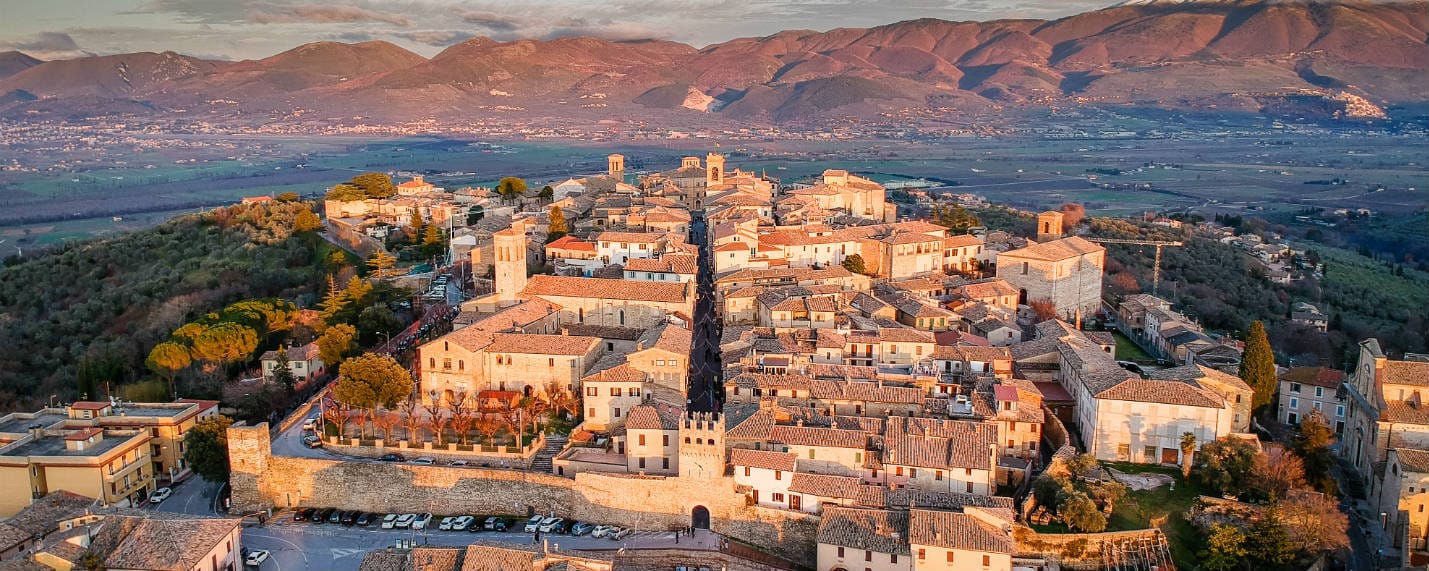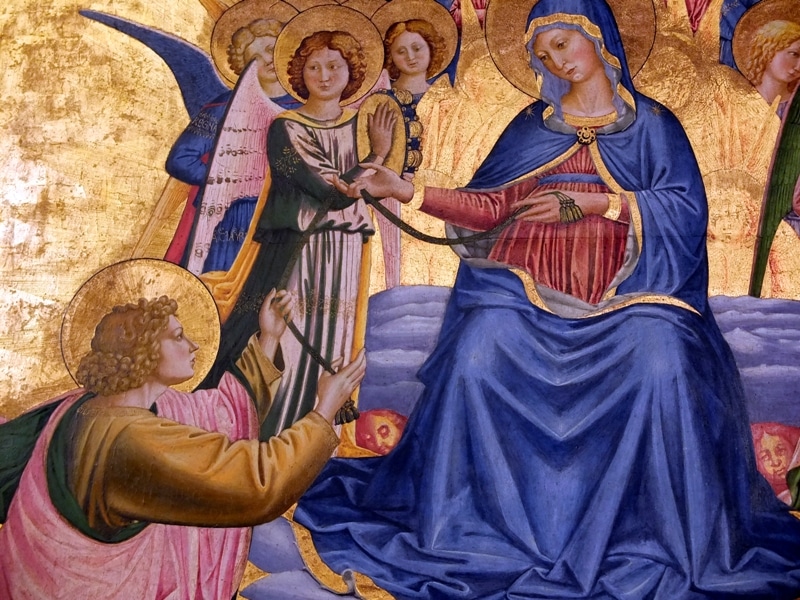The museum complex of San Francesco in Montefalco represents an important testimony of Renaissance painting of the XV-XVI centuries and is composed by the Church of San Francesco, the Pinacoteca Civica, the archaeological section and the cellars of the friars and the exhibition spaces for temporary exhibitions.
The first settlement of the Franciscan friars in the territory of Montefalco dates back to the first half of the thirteenth century with the construction of the Church of Santa Maria della Selvetta, Camiano, near the village. Over the years the friars tried to get closer to the city walls, with the construction of a new church dedicated to the Saints Philip and James, in the zone of the belvedere of the present via the railing of Umbria. Only in 1335 obtained a plot of land within the circle of walls, in the rione of Collemora and built the present church dedicated to the holy founder of the Order.
The Franciscan community remained in the complex until 1861, when with the proclamation of the Kingdom of Italy were confiscated the property of the convent, the friars removed from the liturgical activities and from the accommodation. The convent was converted into a hospital civil, while the church already in the 19th century underwent restoration and maintenance works, with the purpose of conserving the enormous artistic heritage and welcomed the goods confiscated religious communities, joined in a first moment in the former church of San Filippo Neri.
Pinacoteca
The exhibition of the museum complex begins with the Pinacoteca, where are kept mainly the mobile works become part of the municipal heritage, as a result of the abolition of the religious corporations of the territory. The space is organised in four halls, where are displayed in chronological order works dated between the XVII and the XV century.
Church of St Francis
was built between 1335 and 1338 in forms very simple that are enshrined in the panorama of the franciscan architecture, comparable with the church of San Francesco di Trevi and that of Cortona. The building has a single nave covered by wooden trusses replaced at the end of the nineteenth century with the ones that are currently visible; the pentagonal apse of the bottom, with time to ribs resting on corbels figured is flanked by two chapels on a rectangular plan and still to the right from an environment always rectangular used probably to the sacristy. Under the apse the crypt and another compartment coincident for size and shape with that above, are to be considered contemporary to the construction of the Church and the original plan but was modified and extended in later eras. At the end of the fourteenth century on the right wall there began to open some chapels that in little time arrived to align with the facade; at the beginning of the ‘500 on the left side of the counter-facade, was built the aedicule by “Il Perugino”, while between 1580 and 1585 is brought to fulfilment the “Cappella Bontadosi”, on the left side of the nave. The pictorial decoration preserved, performed in fresco, documenta predominantly the secc. XV and XVI, and bears the signature of great artists like Benozzo Gozzoli and Perugino among the most important.
Archaeological section
The archaeological section is staged in the crypt, placed under the apse of the Church of San Francesco. The material preserved, dating from the I century B.C. to the sixteenth century a.d. come from the territory of Montefalco and attest to the occupation of the area already in Roman times.
Friars’ Cellar
from the excavations have revealed three environments that preserved the old masonry tanks for the collection and crushing of the grapes and to contain the musts. The construction of the wineries is datable between 1400 and 1600, while the materials exhibited (presses, tools and utensils for the production and the conservation of the wine) are datable to a period between the XVIII and the XIX century.
museomontefalco@gmail.com



